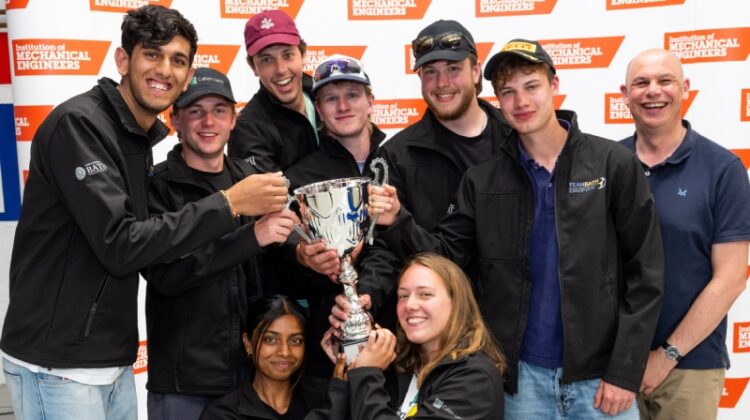
Students from the University of Bath’s Team Bath Drones have secured the title of grand champions of Institution of Mechanical Engineers’ UAS Challenge, having seen off a record number of challengers at the fly-off finals event, which was held at the BMFA Buckminster, the British Model Flying Association’s national centre on the Leicestershire–Lincolnshire border.
They clinched the win after having narrowly beaten the reigning champions Beihang University in Beijing, with the team from the Politecnico di Milano awarded third place on their competition debut. Other teams that received some of the coveted awards include the University of Twente, which won the Design award and Estonian Aviation Academy, which scooped the Operational Supportability award.
The UAS Challenge, which is now in its 11th year of competition, is an annual engineering design competition in which undergraduate and postgraduate students from universities around the world must design, build and fly a completely autonomous unmanned aerial system with a maximum weight of ten kilograms, carrying out a number of different flight missions.
Those who participate are able to apply their academic studies by working on an engineering project as close to the real world as possible, gaining hands-on experience of engineering design, project management and teamwork, enhancing their degree knowledge and making them more capable engineers when they reach industry.

The competition ruleset allows for a wide interpretation of UAS design, and in 2025, students fielded an array of different aircraft. Notable entrants this year include those from Beihang University and Heriot-Watt University, who launched their aircraft with the help of self-designed catapult systems. The Estonian Aviation Academy managed to complete a successful autonomous flight and payload drop using an exotic VTOL tail-sitter design, another first for the competition.
Despite being forced to brave changing weather conditions across the week, including searing heat, rain and winds reaching more than 20 knots, the competitors managed a record 14 flights on the first full day.
‘After a fantastic tenth anniversary last year with the highest number of teams we’ve ever seen at an event, it’s great that the event is still growing, with more than 30 teams taking part this year,’ said Paul Lloyd, UAS chair. ‘The standard we’ve seen this year has been a tremendous step up, with aircraft ready to go from the moment they’ve arrived and flying all the way up to the wire on the final day. Everyone should be very proud of their work this year.’
‘The UAS Challenge is an important educational event in our challenge calendar and brings together practical learning and students’ academic achievements,’ said Joyce Achampong, associate director of impact at the IMechE. ‘It has been my first year here and all of the staff and volunteers have been fantastic. I love the camaraderie between the students and it has been a truly international event, with so many teams coming from overseas. This is exactly what we want to do with these events – bringing people together to network and learn, and truly showing the impact of the IMechE’s efforts in improving the world through engineering.’
After the summer break, the UAS Challenge will reopen for registration in October 2025 with an updated ruleset.
Full scoring for all of this year’s individual events will be available shortly on the UAS Challenge website.


